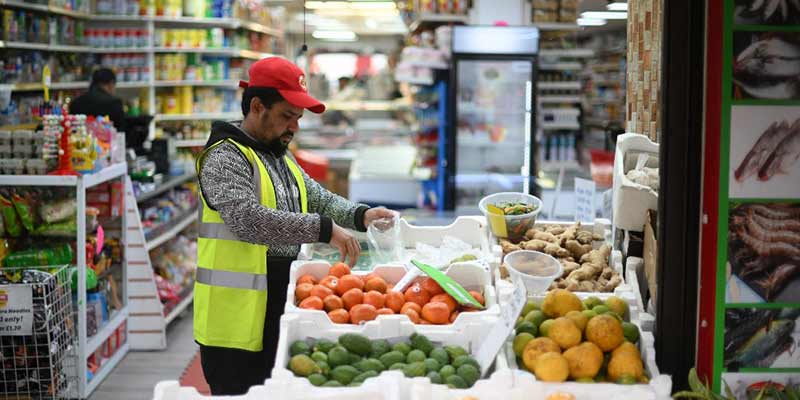- World
- Jul 13
735 million people faced hunger in 2022
• It is estimated that between 691 and 783 million people in the world faced hunger in 2022, according to a study launched by five United Nations agencies.
• Considering the midrange (about 735 million), 122 million more people faced hunger in 2022 than in 2019 due to the pandemic and repeated weather shocks and conflicts, including the war in Ukraine, according to the State of Food Security and Nutrition in the World.
• It adds up to a grim warning, potentially jeopardising the UN’s Sustainable Development Goal of ending hunger by 2030.
State of Food Security and Nutrition in the World
• The State of Food Security and Nutrition in the World is an annual report jointly prepared by the Food and Agriculture Organisation of the United Nations (FAO), the International Fund for Agricultural Development (IFAD), the United Nations Children’s Fund (UNICEF), the World Food Programme (WFP) and the World Health Organisation (WHO).
• Since 1999, it monitors and analyses the world’s progress towards ending hunger, achieving food security and improving nutrition. It also provides an in-depth analysis of key challenges for achieving these goals in the context of the 2030 Agenda for Sustainable Development.
Measuring food insecurity
A person is food insecure when they lack regular access to enough safe and nutritious food for normal growth and development and an active and healthy life. This may be due to unavailability of food and/or lack of resources to obtain food.
Food insecurity can be measured at different levels of severity:
i) People who are moderately food insecure are uncertain about their ability to obtain food and have had to reduce the quality and/or quantity of the food they eat to get by.
ii) People experiencing severe food insecurity have typically run out of food and, at worst, gone a day or more without eating.
The annual State of Food Security and Nutrition in the World report provides global, regional and country-level estimates of how many people are experiencing food insecurity at two levels of severity.
Some key terms:
Acute food insecurity: Food insecurity found in a specified area at a specific point in time and of a severity that threatens lives or livelihoods, or both, regardless of the causes, context or duration. It has relevance in providing strategic guidance to actions that focus on short-term objectives to prevent, mitigate or decrease severe acute food insecurity.
Hunger: An uncomfortable or painful sensation caused by insufficient energy from diet. In this report, the term hunger is synonymous with chronic undernourishment and is measured by the prevalence of undernourishment (PoU).
Malnutrition: An abnormal physiological condition caused by inadequate, unbalanced or excessive intake of macronutrients and/or micronutrients. Malnutrition includes undernutrition (child stunting and wasting, and vitamin and mineral deficiencies) as well as overweight and obesity.
Moderate food insecurity: A level of severity of food insecurity at which people face uncertainties about their ability to obtain food and have been forced to reduce, at times during the year, the quality and/or quantity of food they consume due to lack of money or other resources. It refers to a lack of consistent access to food, which diminishes dietary quality and disrupts normal eating patterns. It is measured with the Food Insecurity Experience Scale and contributes to track the progress towards SDG Target 2.1.
Severe food insecurity: A level of severity of food insecurity at which, at some time during the year, people have run out of food, experienced hunger and at the most extreme, gone without food for a day or more. It is measured with the Food Insecurity Experience Scale and contributes to track the progress towards SDG Target 2.1.
Undernourishment: A condition in which an individual’s habitual food consumption is insufficient to provide the amount of dietary energy required to maintain a normal, active, healthy life. The prevalence of undernourishment is used to measure hunger and progress towards SDG Target 2.1.
Key points of the report:
• Hunger was on the rise in Western Asia, the Caribbean and throughout all sub-regions of Africa in 2022.
• Africa remains the worst-affected region with one in five people facing hunger on the continent, more than twice the global average.
• Progress in hunger reduction was observed in Asia and Latin America.
• In addition to rising hunger, the capacity of people to access healthy diets also deteriorated across the world. More than 3.1 billion people globally (or 42 per cent) are unable to afford a healthy diet. This represents an overall increase of 134 million people compared to 2019.
• Approximately 29.6 per cent of the global population, equivalent to 2.4 billion people, did not have constant access to food, as measured by the prevalence of moderate or severe food insecurity. Among them, around 900 million individuals faced severe food insecurity.
• About 148 million children under five were stunted (a condition marked by low height per age), 45 million were wasted (low weight), and 37 million were overweight, often an indicator of poor nutrition.
• Children’s malnutrition displays differently in urban and rural settings. The prevalence of child stunting was higher in the countryside (35.8 per cent) than in urban areas (22.4 per cent).
• Similarly, wasting was higher in rural areas (10.5 per cent) compared to urban areas (7.7 per cent), while being overweight is slightly more prevalent in urban areas (5.4 per cent) compared to rural areas (3.5 per cent).
Manorama Yearbook app is now available on Google Play Store and iOS App Store





